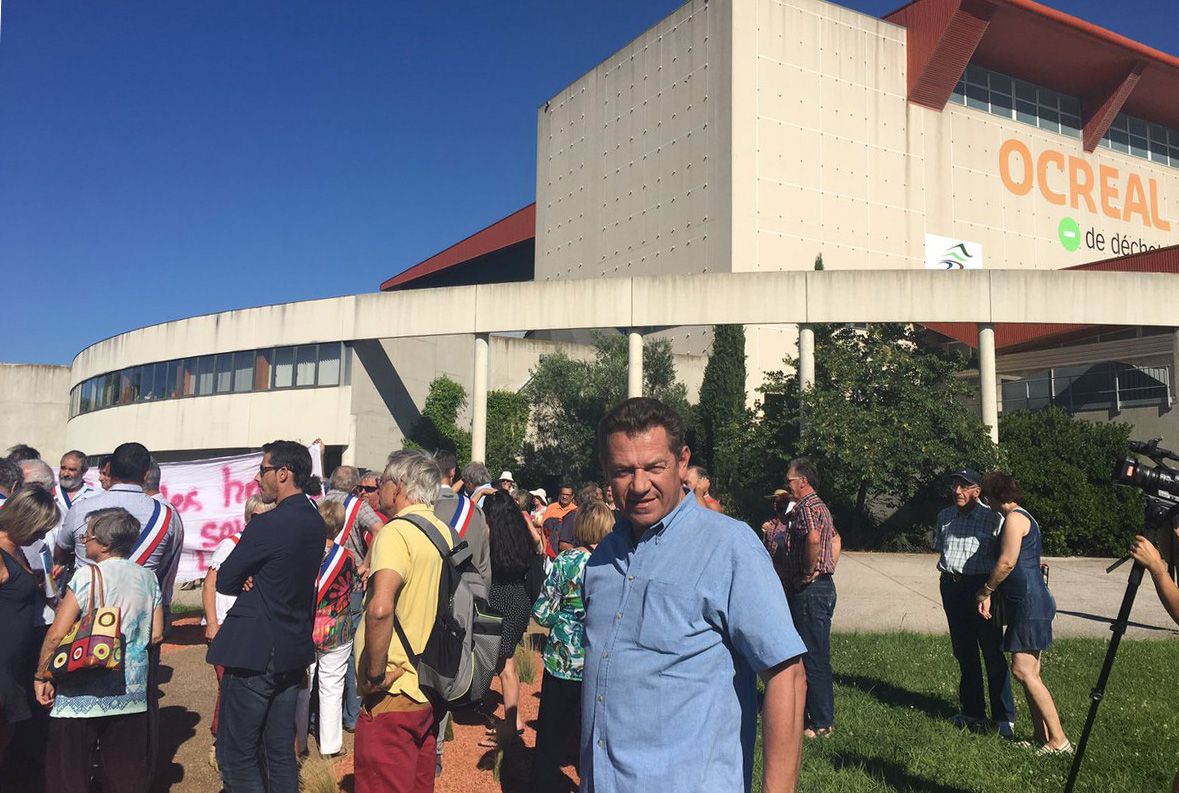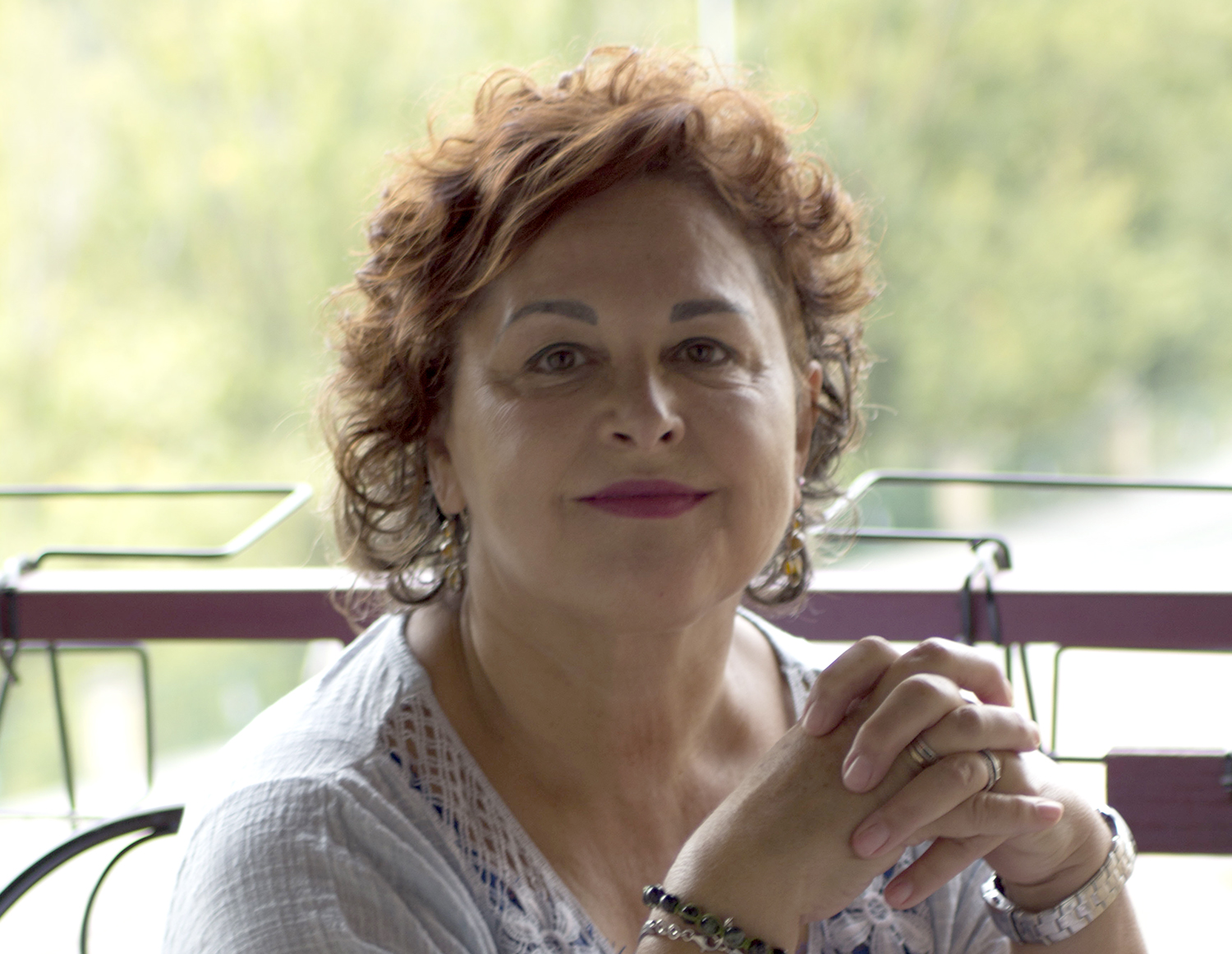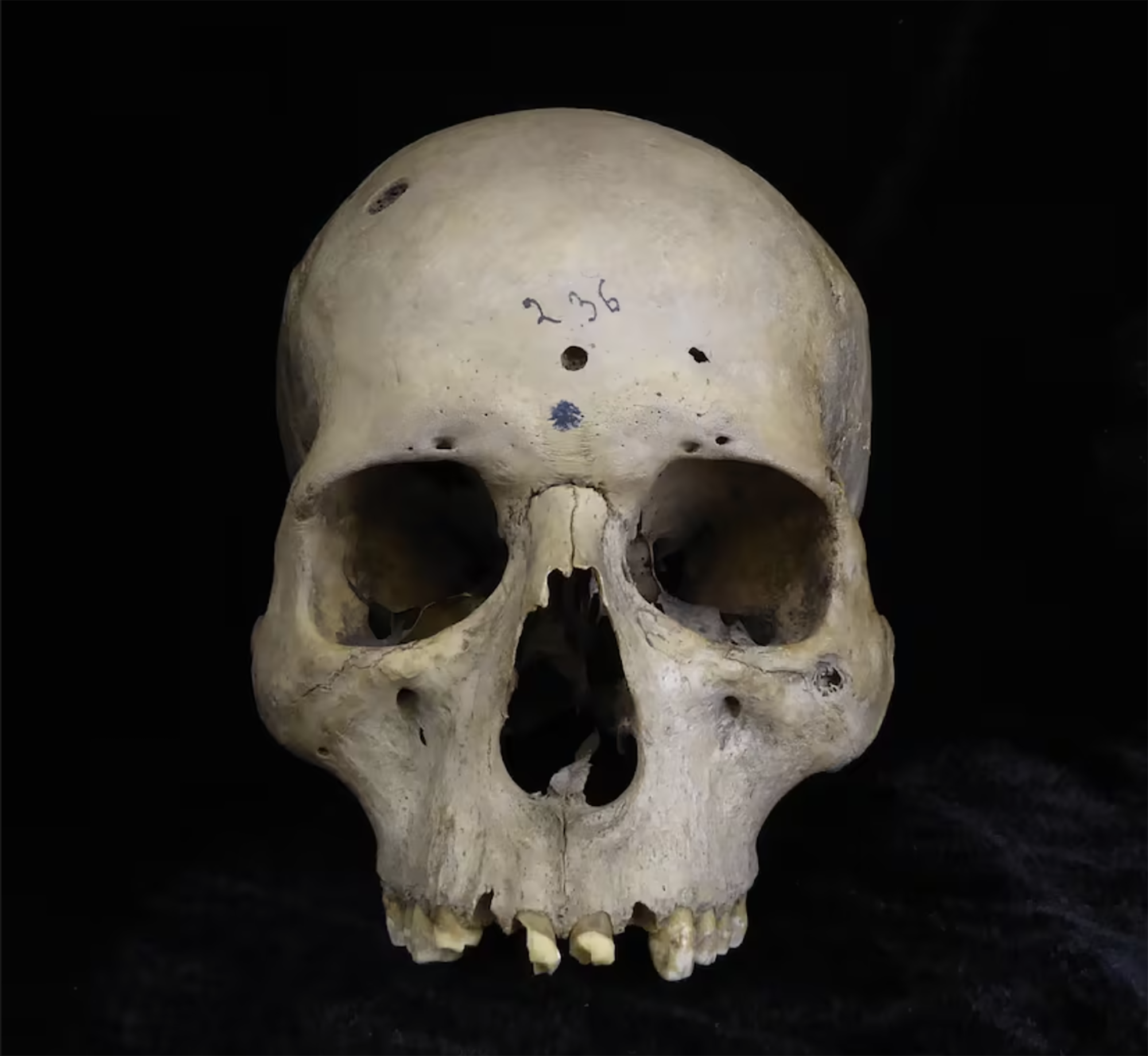The new incinerator also multiplies cancer
- But is it true that burning waste can kill people? Debates of the European Parliament Those responsible for the former Vaux-le-Penil incinerator were tried in December 2017 for the spread of dioxins and others to local citizens. But there are also problems with the latest cutting-edge technologies, according to an epidemiological study from Montpellier. ARGIA has been asking about the event.

“More cases of cancer in the Lunel-Viel incinerator” (Lunel-Viel Cancer Surincidences) titled the Midi-Libre journal on October 13, 2016. From the Sud-Ouest group, say Midi-Libre i.e. Diario Vasco or Correo in Montpellier. The chronicle signed by Prisca Borrell said: “The latest study on tumour registration in the department of Herault is known. A direct connection with the incinerator of Ocréal has not been demonstrated, but the pathologies are there and the consequences are worrying. […] Yes, the proliferation of cancer cases in the region is huge, but it is not proven by the incinerator.”
Readers to situate the conflict: At 580 kilometers from Donostia-San Sebastian – five and a half hours by car, on the road to Marseille – the city of Montpellier, in the department of Herault, has a population of 280,000 inhabitants and a population of 590.000 inhabitants. It has, in addition to more infrastructure, the Ametyst TMB plant and, 15 kilometres from the capital, the Lunel-Viel incinerator. The debate is about the two, but what has most concerned the public is the incinerator.

from the accumulation of many pollutants."
The dust dossier was prepared at the request of the French Institute of Public Health (INVS): “Herault Department Tumour Registry: A descriptive study focused on canneries in the geographic area of the Lunel-Viel incinerator for household waste”. Since its incineration in 2010, the environment of the incinerator has been analyzed, which has added many innovations in four areas: an environment of up to 5 km of factory, from 5 to 10 km, from 10 to 15 km, and a space affected by the main wind trends.
Although Midi-Libe pointed out with great caution that “no direct link with the incinerator was demonstrated”, the authorities were obliged to inform the Regional Health Agency, which convened on 24 April 2017 a meeting of the monitoring committee of the incinerator of Lunel-Viel to analyze the findings in the register of tumours, that is, that in an area of proliferation between 5 and Non-Hodgkin lymphomas, soft tissue sarcomas, leukemias…
The Association of Doctors for the Environment and Health (AMIES), which has long been investigating and denouncing the risks of the Lunel incinerator, is also in the committee convened by the authorities. Francis Glemet is a doctor in pharmacy and spokesperson for AMIES, and is also a spokesperson for the National Coordinator of Physicians for Health and the Environment (CNMSE), one of the interlocutors of the French Government.
Glemet has received LUZ at home, has ratified us in several interviews and conferences and has brought us to the Ocreal incinerator in Lunel-Viel. He pointed out there – Glemet’s words are recorded in video – that he has all the progress in limiting pollution to the level that Europe marks – and yet he has raised the alarms.
When it was convened by the Department of Herault in the spring of last year, the monitoring committee of the incinerator, AMIES led two renowned independent experts to testify: Endocrinologist Charles Sultan and researcher at the Kantzer Institute of Montpellier Mariette Gerber.
“Dr. Sultan said – Glemet says – that if something is not done quickly, if it is not transferred to other waste management methods, we are going to a health disaster, a disaster that will cost us money and people’s health, because dioxins and their closest pollutants are endocrine disruptors.” In addition, experts stressed that the continuation of cancer registration is only one part of the issue, both in terms of cancers and other diseases that may result from incineration, such as urethral malformations that children bring at birth, “whose risk is 3 times greater in the setting of incinerators than in the rest of the places.”
According to Sultan, the most serious problems will not be seen in the next ten or fifteen years, “but two or three generations later, as is happening with the Distilvano.” Distilbeno (Diethylstilbestrol) is a synthetic hormone that was given to many women during pregnancy in the United States and in some advanced European countries between 1940 and 1970, and that in 1971 prevented this harmful drug that affects the mother but not her daughters and grandchildren.
For Sultan, the contamination limits that apply to incinerators – in addition to controlling only four dozen of the two thousand poisons discharged by furnaces – have become outdated and short, do not capture what science has learned over the past three decades, either by the mechanics of endocrine disruptors, or by the accumulation of many pollutants.

In the old and new incinerators, the same types of cancer
The second expert who presented the AMIES association is Dr. Mariette Gerber. Narbonne spoke to ARGIA. Gerber is known to doctors interested in the impact of incinerators on health: A well-known study carried out for the Cancer Institute of Montpellier in 2003 showed the relationship between incineration and the increase in breast cancer in women, specifically around the incinerators of Sète and Perpinyà, near Montpellier. They had previously generated incinerators, built between 1972 and 1990, in which myelomas, Non-Hodgkin lymphomas, breast cancers and lung cancers multiplied. Seeing a similar picture around the most modern incinerator in Lunel-Viel, with similar diseases, caught the attention of Dr. Gerber.
In both cases, moreover, as in the old incinerators, studies have found the same paradox in the case of breast cancer: in the area of less than 5 kilometres of the incinerator, cancers do not increase, and yes, between 5 and 15 kilometres. “In that 2003 study, we demonstrated that the highest rates of cancer do not occur precisely in areas where dioxin batteries are higher. Endocrine disruptors are characterized by their greater efficacy in medium and weak doses. In higher doses, human body receptors are blocked, as was also demonstrated in the serious Seveso accident.”
Dr. Glemer warns that the real reality of cancer is fuller than that of the Registry that has been shown by the authorities. The report of the first few years after the incineration plant started reverses the epidemiological analysis: knowing that the effects of pollutants appear 10 or 15 years later, the damage of a problem started in 2000 will begin to appear from 2005 to continue much later. That is why, says Glemer, the real proliferation of cancers must actually be greater than that of these data.
Glemer argued in his testimony that the authorities have two options in the Lunel-Viel affair. Or they do new research, but that's going to cost a lot of money and time is going to pass in the meantime. Or they must apply the principle of precariousness and suspend incineration.
.jpg)
Malformations at birth
However, cancer is not the only concern that exists about residue burning. Charles Sultan is the head of the pediatric endocrinology department at the University Hospital of Montpellier and in 2015 the research team led by him published in the journal European Urology a study on the malformations that children can bring when they are born from contamination. In particular, children who have a malformation called hypospadias have been tested: in addition to a bad shape of the penis, they do not bring a hole to urinate where it is needed. Sultan equipment has shown that the figures for hypospadias are more than twice as common in areas of 5 to 10 kilometres of incinerators.
In several interviews, writings and conferences, Sultan has warned about the risks of pesticides, cosmetics and other endocrine contaminants: “In our service, we have never seen such a high number of micro-reports as today in newborn children.” In parallel, premature growth of breasts and breasts and many other problems arising from the confusion of the hormonal system are multiplied in girls. “The damage can last for at least two or three generations and we are creating sterile men, this is a bomb,” says Sultan. He is convinced that the links with more diseases will be shown: “Dioxins are the ones that most affect endocrine diseases, thyroid, diabetes, ovarian and testicular malformations… Today we know that dioxins cause fertility damage, but this is not the tip of the iceberg.”
Conflictive history of the Lunel-Viel incinerator
Lunel-Viel's Ocréal incineration plant was launched in 1999 by the Public College of the region of Entre Pic and Etang. Between its two furnaces it is prepared to heat 120,000 tons of mixed waste a year. It is managed by the SITA Corporation (formerly Novergie), branch of the multinational Suez Environment. BAJITO Suez has incinerators all over the world and is particularly strong in its home country, France, collecting and burning millions of tons of waste from millions of inhabitants. Suez is to name a leading multinational in the procurement of global public services: EUR 15.200 million of revenue in 2016, EUR 623 million net profit, EUR 82,300 workers…
.jpg)
The history of Lunel-Viel, like that of many other incinerators, is full of fluctuations and conflicts. Since the authorities began designing the project of the region in 1995, there have been numerous demonstrations against it by the citizens. Following a number of incidents in 1999, the prefect halted the release of dioxins above what was regulated in 2005 and thus kept the sawdust for three months. The work had also become more urgent: the initially budgeted 39 million eventually reached 80 million, according to Berdeak and other groups.
Once the permission to resume the activity was obtained, it was annulled in 2007 by the judges of the National Court. It took the prefect of Herault one month to grant his new provisional authorisation. In 2011, the State Council decided that all authorizations granted by the prefect were contrary to the law, as they did not have an adequate assessment of environmental damage.
The Supreme Judges of Paris and the Council of State made new investments in the incinerator to correct other identified errors, paid by the community of Entre Pic and Etang of which it owns, the citizens on their own tax. In 2011, journalist Laurent Radisson wrote at the Actu-Environement that “the initial contract of 1995 was changed six times between 1997 and 2000, four times more between 2003 and 2007.” However, in 2012 the prefect again authorised the Suez-BAJITA plant.
Pressure from lobbies and police repression
In autumn 2016, the press released findings from the department's cancer registries and, as stated at the beginning, in spring 2017 the authorities convened the incinerator's monitoring committee. However, the debate has made a further leap with the follow-up committee meeting on 19 November. In this period something has happened, as the health authorities have decided that in the investigation in which the proliferation of several tumours was observed during the spring there is nothing relevant. Plans to conduct further studies and to open a dialogue and information session with municipal authorities and citizens on the incinerator have been suspended. Why?
In 2019 it is up to the authorities to decide on the renewal of the incinerator’s contract and, like the industrialists, the administrations want to tie it well because the waste incineration authorisation reaches 2030. The lobbys of public procurement and incineration are being pushed all over Europe and when it comes to making decisions, the prefects, powerful representatives of the Paris government, are confronted harshly. During 2017, experts and doctors questioning the Lunel-Viel furnaces have been under heavy pressure for several hours. AMIES spokesman Francis Glemet has confessed to ARGIA what has happened recently. When, in collaboration with the Lunel-Viel City Hall, a round table has been organized to listen to the opinions of the experts, the Police Information Brigade RG received a call at its home asking about the details of the meeting and whether they “intended to revolt”. In France, no one jokingly receives a call from Renseignements Généraux.
Doctors haven't stopped. "What do we have to do when damage data starts to appear, to continue for 10 years by spreading it to people? ", asks Glemet. “We tell the authorities in the region that there are ways to manage waste in a different way, to look at San Francisco’s Zero Garbage model… but they have answered ‘they are and we are’.” AMIES doctors call for the precautionary principle to be applied and for the Lunel-Viel incinerator to be switched off immediately.
Two years ago, the Catalan archaeologist Edgard Camarós, two human skulls and Cancer? He found a motif card inside a cardboard box at Cambridge University. Skulls were coming from Giga, from Egypt, and he recently published in the journal Frontiers in Medicine, his team has... [+]



















